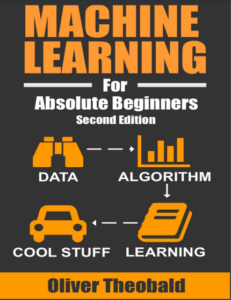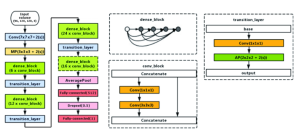Introduction to Machine Learning Evolution
Machine learning has led to substantial advancements in artificial intelligence. Machine learning has emerged as a vibrant field of study in its own right, despite first being thought of as a subfield of artificial intelligence (AI).The invention of the first neural networks and data-adaptive algorithms in the middle of the 20th century marked the beginning of this trend. The capabilities of machine learning expanded in parallel with processing power. Decision trees and support vector machines improved predictive analytics and pattern recognition in the 1980s and 1990s. In the twenty-first century, machine learning applications have increased dramatically because to the amount of data and the capabilities of current computers. The use of complex neural networks in deep learning, a subfield of machine learning, has defined this period.
Historical Milestones in Machine Learning
Early Theories and Algorithms
Innovative theories and techniques helped to shape machine learning in its early stages. The idea of computers learning from data was first presented in the 1950s, setting the stage for later advancements. The first algorithms that led to artificial neural networks were the Perceptron, created by Frank Rosenblatt in 1957. Decision tree algorithms, which are essential for deriving logical conclusions from data, were also introduced during this time. The creation of the nearest neighbor algorithm, which is essential for pattern recognition, was another noteworthy accomplishment. By proving that robots could learn and adapt via experience, these early theories and algorithms paved the way for more sophisticated systems and radically changed the field of artificial intelligence.
The Surge of Data and Computational Power
Big Data’s Role
Machine learning has advanced greatly thanks in large part to the use of big data. A previously unheard-of resource for training machine learning models is the digital age’s vast data explosion. Smart devices, social media, and the internet have created massive volumes of data every second that may be accessed through complicated, rich, and diversified databases. Machine learning algorithms can now recognize trends, train more efficiently, and produce more accurate predictions because to the quantity of data.Moreover, Big Data has spurred the creation of increasingly complicated algorithms that can manage the volume and complexity of data, improving a number of industries including finance, healthcare, and autonomous systems. Big Data and machine learning work together in a transformational way that keeps pushing the limits of what these technologies are capable of.
Advances in Computing
Technological developments have sped up the development of machine learning. Two prominent examples of how processing power has grown and improved the efficiency of complex algorithms are modern GPUs and cloud computing.The management of huge datasets, which is necessary for training complex models, has been made easier by this computing breakthrough. Furthermore, machine learning has been further expedited by the advent of specialized hardware like TPUs, which has made real-time processing and sophisticated neural network training more practical and widely used.
Transformative Machine Learning Technologies
AI Breakthroughs
In artificial intelligence (AI), machine learning has advanced significantly. Among the most notable is the development of deep learning algorithms, which mimic the ability of the human brain to learn from massive amounts of data. These algorithms have transformed fields like speech and picture recognition, allowing machines to carry out tasks with remarkably high accuracy. Reinforcement learning is another accomplishment, best demonstrated by AI systems that surpass human ability in complicated games like Go and Chess. Furthermore, developments in natural language processing have produced intelligent chatbots and language models, which have significantly improved machine-human interactions. These discoveries herald a revolutionary age in machine learning-driven artificial intelligence.
Real-World Applications
Many real-world domains have been impacted by machine learning. It helps with disease detection and individualized treatment programs in the healthcare industry. It drives algorithmic trading and fraud detection in the financial industry. Retail gains from customized client suggestions. Furthermore, machine learning improves supply chain management and advances autonomous vehicle technology, demonstrating its broad range of applications.
The Ethics of Machine Learning
Ethical Frameworks
Machine learning ethical frameworks are essential to guaranteeing responsible use of technology. They tackle important issues including algorithmic transparency, data privacy, and bias prevention. These frameworks call for the creation of anti-discrimination and human rights-abiding systems. They support explainable AI, which guarantees that judgments rendered by machine learning algorithms are transparent and responsible. These frameworks also highlight the significance of ethical data sourcing and inclusive data representation, assisting developers in designing machine learning solutions that are just, equal, and advantageous to all societal segments.
Machine Learning in Industry and Business
Impact on Various Sectors
Machine learning has revolutionized the way several sectors function and innovate, having a huge impact on them all. It improves the precision of diagnoses and individualizes care in the medical field. It drives risk assessment and fraud detection in the financial sector. Inventory control and individualized client experiences have revolutionized the retail industry. Self-driving technology’s increased efficiency and safety benefits the transportation industry. Furthermore, machine learning in manufacturing enhances predictive maintenance and production operations. These developments demonstrate the enormous potential of machine learning and provide more intelligent, effective solutions for a variety of sectors.
Future Business Models
Machine learning is expected to have more data-driven and dynamic business models in the future. Their top priorities will likely be to deliver personalized consumer experiences, boost operational effectiveness, and apply predictive analytics to strategic decision-making. The models under consideration, which give priority to AI-as-a-Service, would make it easier for businesses of all sizes to acquire advanced AI capabilities, fostering innovation and competitive advantage in a variety of industries.
Education and Machine Learning
Personalized learning experiences made possible by machine learning are transforming the educational system. It optimizes learning paths for individual needs by analyzing student performance to customize educational content. It also greatly improves the entire educational process and results by increasing engagement through interactive and adaptive technologies and helping teachers discover areas that need more attention.
Machine Learning and Society
Machine learning is changing daily life and industry, which has a huge impact on society. With autonomous cars, it transforms transportation, improves healthcare through predictive diagnosis, and customizes retail experiences for customers. But it also brings up moral questions about partiality and privacy. The secret to innovation’s beneficial societal influence is to balance it with ethical use.
Challenges and Limitations in Machine Learning
Despite its revolutionary potential, machine learning has drawbacks. Quantity and quality of data are essential since biased or subpar data might produce models that are not reliable. Decisions made by algorithms with high complexity frequently lack transparency, which makes them hard to comprehend and believe in. To guarantee appropriate use, ethical issues like fairness and privacy must also be continuously addressed.
Machine Learning for Sustainability and Environment
The role of machine learning in advancing environmental and sustainable projects is growing. It supports monitoring ecological health, improving the efficiency of renewable energy sources, and evaluating climatic patterns. Its usefulness as a tool for ecological preservation and conscientious environmental stewardship is demonstrated by the way it predicts environmental patterns, which helps formulate plans for conservation and sustainable resource management.
FAQs on Machine Learning
What future trends are expected in machine learning?
How is machine learning integrated with other technologies?
How can machine learning contribute to sustainability?
What role do international collaborations play in machine learning?


